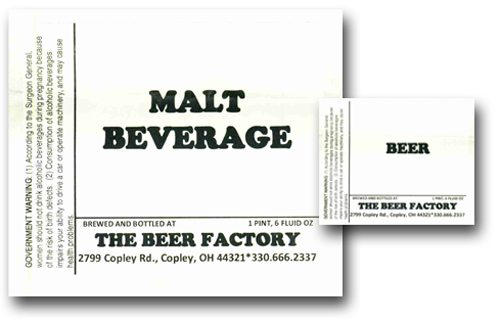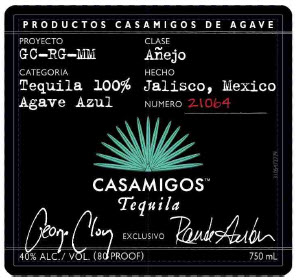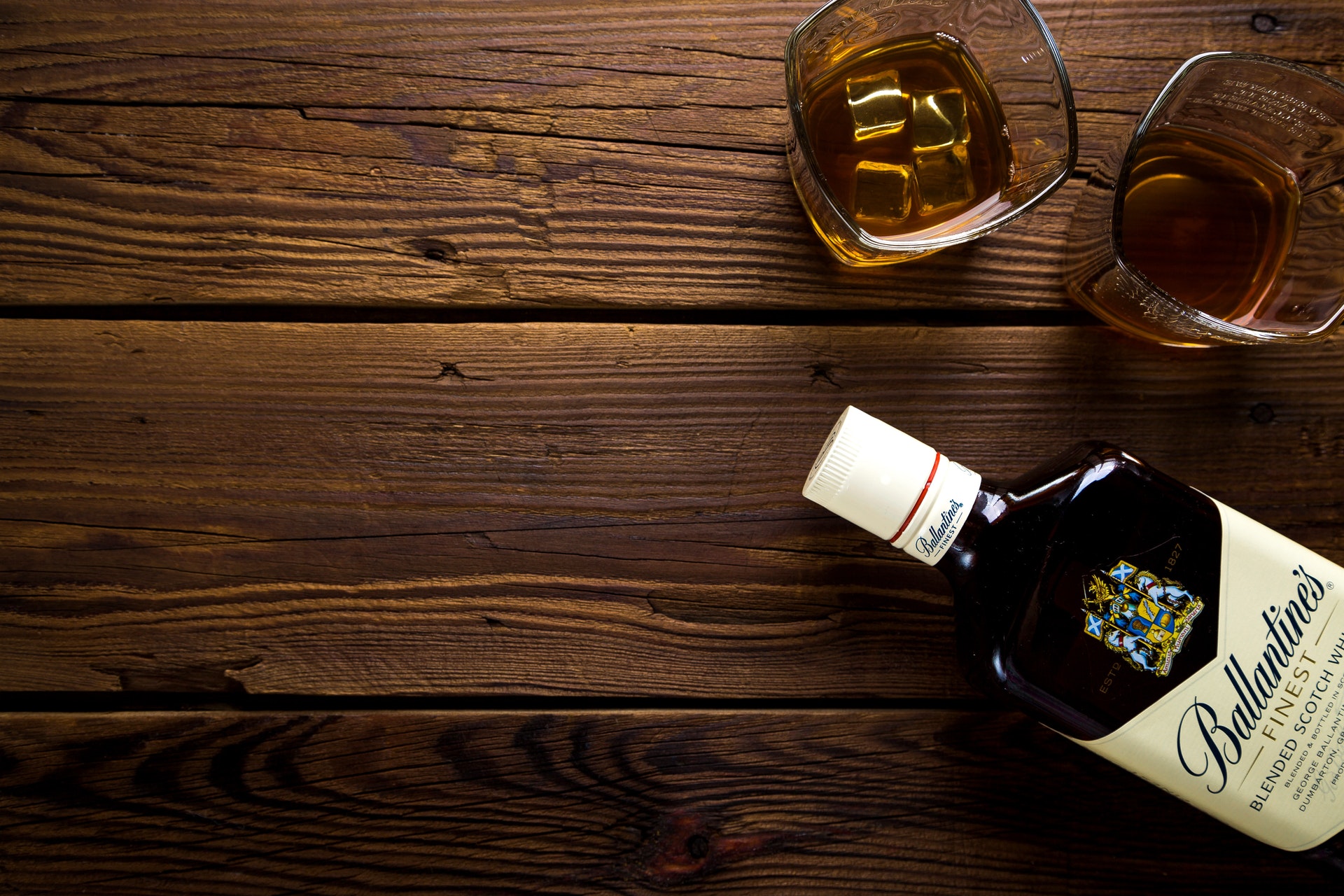If you spend any time at all on this blog, or at the liquor store, we think you will have no trouble finding plenty of ornately packaged beverages. In glaring contrast, there are the products above. They are a marvel of minimalism. No art. No UPC. No singing the praises of the beer’s astonishing finish. These labels have only what TTB requires, and barely that. Simple labels like this may be about to go the way of the horse and buggy. Sooner or later, TTB is likely to approximately double the number of elements required on a label like this. In addition to Warning, type, brand, bottler, and net contents (as above), TTB is gearing up to require alcohol content, typical serving size, number of servings per container, calories, carbohydrates, protein, fat and allergens. Enjoy the simple things, while you can. Malt Beverage and Beer are produced by The Beer Factory of Copley, Ohio.
Continue Reading Leave a CommentSparkling Spirits
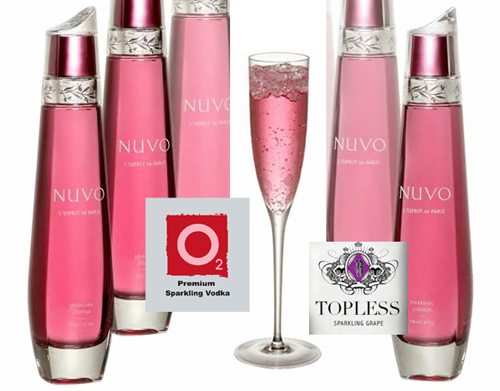
Sparkling wine has been around a long time. Drew Lambert says the English invented it back in the 1600s, before the French. Beer got its fizz around the same time. It took another 400 years for spirits to acquire a fizz, and now sparkling spirits are here with a vengeance. Nuvo was early, first approved on December 11, 2006. It is a sparkling liqueur made with vodka, sparkling wine and fruit nectar, in France. Three days earlier, TTB approved O2 Sparkling Vodka. It’s currently made in England and imported by Admiral. Topless is a third example of this trend. It is vodka with natural flavors and CO2 added. Topless is made in Holland and imported by Drinks Americas of Wilton, Connecticut.
Continue Reading Leave a CommentTags: processing, sparkling
Spirits from the Deep Oceans
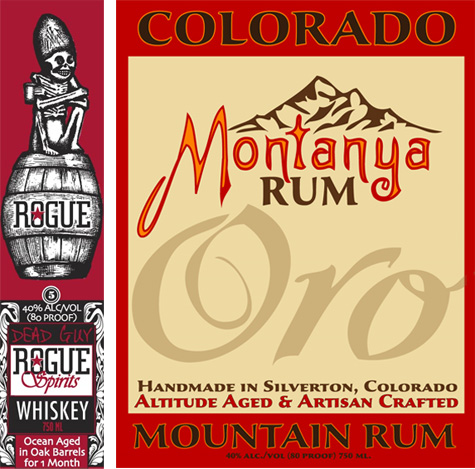
Rogue Spirits makes a Dead Guy Whiskey “Ocean Aged in Oak Barrels for 1 Month.” Is it a gimmick or a good idea? Let’s just say they are not alone in searching high and low to make innovative products. Ocean Vodka “uses deep sea water from Hawaii” according to Luxist. “The water is drawn from 3,000 feet below the surface of the Pacific Ocean … to be devoid of surface pollutants.” Montanya Distillers is headed in the other direction. They make Mountain Rum in Silverton, Colorado, where it is “altitude aged” far from the seas.
Continue Reading Leave a CommentTags: ingredients, processing
Champagne Battle Spills into Time Magazine

We never thought we’d see a TTB controversy make it into a big ad in the national media — let alone a full page ad in Time Magazine. The yellow ad is on page 69 of the December 29, 2008 “Person of the Year” double issue and it covers the entire page. The French Office of Champagne is not at all pleased that some non-French wines qualify to be called Champagne, under US law. The ad says “Masquerading as Champagne … isn’t fair. … A legal loophole allows” some names to be misused. In 2006, after many years of negotiations between the US and the European Union, and agreement, TTB set forth the current US rule in TTB Industry Circular 2006-1:
Continue Reading Leave a Commentthe U.S. made a commitment to seek to change the legal status of [terms like Champagne] to restrict their use solely to wines originating in the applicable EU member state, with certain exceptions. Because the IRC specifically defines semi-generic names, this law must be changed in order to restrict the usage of the names to wines originating in the EU. Assuming the law is so changed, the Agreement contains an exception to this rule. We refer to this exception as the “grandfather” provision. Under the “grandfather” provision, any person or his or her successor...
WineAmerica Comment; Top 7 Things to Know
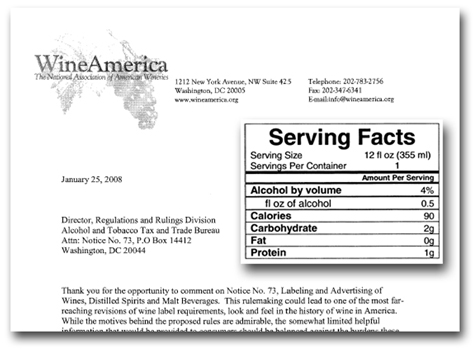
It is likely that all beer, wine and spirits labels will change dramatically in the near future. TTB has been working on new rules since CSPI and other groups submitted a petition in 2003. The new rules would require a “Serving Facts” panel on every container. This panel would include a lot more information, such as the typical serving size, number of servings per container, calories, carbohydrates, protein and fat. Because this is a big, controversial change, TTB has received more than 18,000 public comments during the past few years. There are far too many comments for most people to review, and so we will highlight and summarize the most noteworthy comments here. The most recent proposal and comments are here. This is comment 4 in a series; to see others, click on the “serving facts” tag below.
- WineAmerica said “This rulemaking could lead to one of the most far-reaching revisions of wine label requirements … in the history of wine in America.”
- Most common wines “fit into a very narrow band of calorie content per serving, about 120 calories” and this information is easy to find on the Internet. The rule could cause “information overload” and would provide “very little, if any benefit” to consumers.
- These changes would have “very negative economic effects” on more than...
Tags: policy, serving facts/allergens
